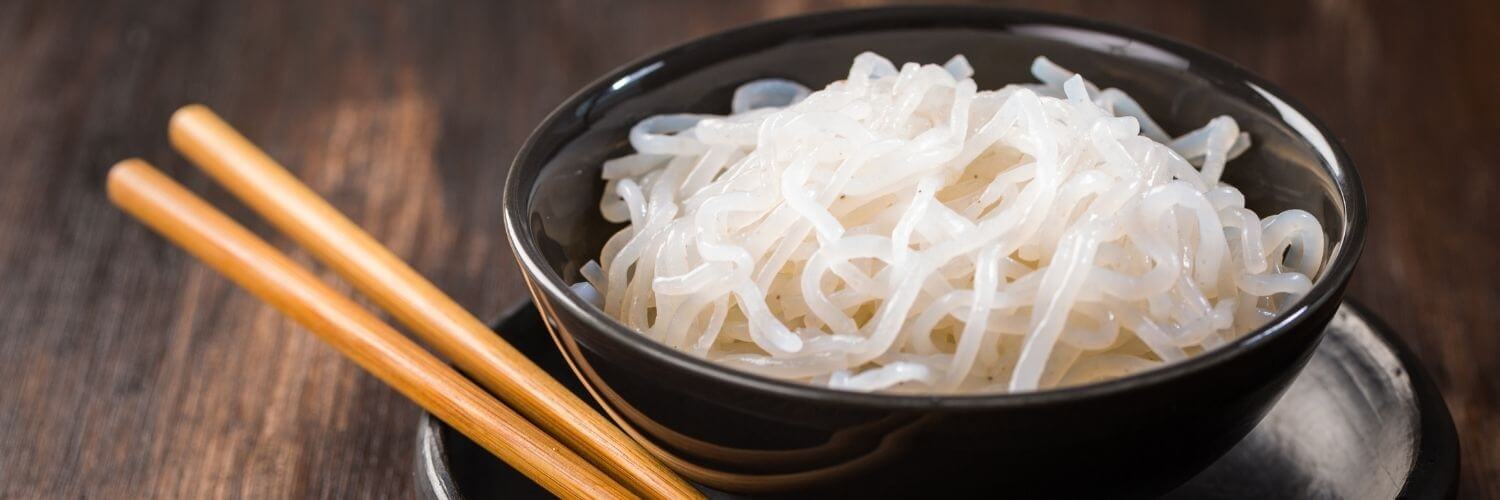
Shirataki noodles are also called miracle noodles because they are a healthier, low-carb, and low-calorie alternative to other noodles and pasta. Shirataki noodles are also vegan and gluten-free, making them ideal for many diets as well.
Udon, soba, and ramen are some of the types of noodles that immediately spring to mind when you think about Japanese noodles. But there are many others. The one that you’d be doing yourself a big favor by adding it to your regular diet is shirataki noodles.
Some people call them as miracle noodles because you can enjoy the noodles without worrying about consuming so many carbohydrates and calories. They became a popular staple of the keto diet and easy to find in many supermarkets. You can also easily order different flavors of shirataki noodles that are very inexpensive and easy to make at our online store.
Shirataki noodles are vegan and gluten-free. They are high in glucomannan, a type of fiber that helps to aid in weight loss. In fact, they are actually made from glucomannan, which comes from the root of the konjac plant. For this reason, shirataki noodles are also called konjac yam noodles or ito konnyaku.
The word shirataki translates to “white waterfall,” an apt description since the noodles are slightly translucent, mimicking the look of a waterfall when held aloft on your fork or chopsticks.
The noodles are 97% water, which has been blended with the glucomannan fiber. They are more gelatinous than other noodle varieties and exhibit a slightly chewy texture.
Health Benefits of Shirataki Noodles
Low-carb, low-calorie, and gluten-free are just some of the reasons this noodle is the miracle noodle. They also aid in weight loss, but there is more to it than that. The type of fiber shirataki noodles is made from moves through your digestive system more slowly than others, helping you to feel full longer.
And because of the fiber’s slow travel through your system, it also enables you to absorb more nutrients into your bloodstream and provides more nourishment to the beneficial bacteria that live in your colon and fight inflammation. These bacteria also help support a healthy immune system, so keeping them nourished is a good thing.
Some studies also show that glucomannan can also help reduce blood sugar and insulin levels, lower cholesterol levels, and relieve constipation.
Popular Ways to Eat Shirataki Noodles
Shirataki noodles are very easy to prepare. They usually come in a bag, and when you are ready to cook them, you rinse them in cold water for a minute or two. You can enjoy them both as a cold or hot noodle dish, with multiple ways to prepare them.
Shirataki noodles will soak up the flavors of whatever spices and broths you use to cook them in, making them ideal for preparing many different, flavorful, and healthy meals. Try them with hot pot dishes such as nabe or oden. You can also sauté the noodles in some sesame oil or other sauces such as soy sauce or teriyaki sauce. They are excellent when simmered in dashi with root vegetables, or they can serve as a healthy side dish to proteins such as beef, chicken, or fish.
You might also try using them in regular pasta dishes in place of pasta such as spaghetti or linguine. Try a shrimp scampi with shirataki noodles, or even just a basic shirataki noodle and meatball dish. When enjoying them cold, you can use some as a topper for salads or simply on their own with whatever herbs, spices, or sauce flavoring you’d like.
How to Use Shirataki Noodles
Sometimes people who try shirataki noodles for the first time don’t enjoy them. But this is also usually because they don’t know how to use them properly. The first step is to rinse the noodles thoroughly before use.
When pan-frying them, use very little oil or liquid, and the texture will be better. The noodles absorb flavor very easily, so you don’t need to add much sauce or oil. Even just adding a few spices like garlic, ginger or herbs will give them a big boost of flavor.
When using the noodles with hot pots or soups, you don’t need to boil them. You also don’t need to worry about leaving them in hot water for too long either. They won’t overcook and will retain an al dente texture.
You can also purchase shirataki noodles that are already slightly flavored. Shirataki noodles by Ishibashiya have been kneaded with kabocha pumpkin, carrot, or spinach. This removes konjac’s unique smell and flavor, making them taste just like regular pasta!
